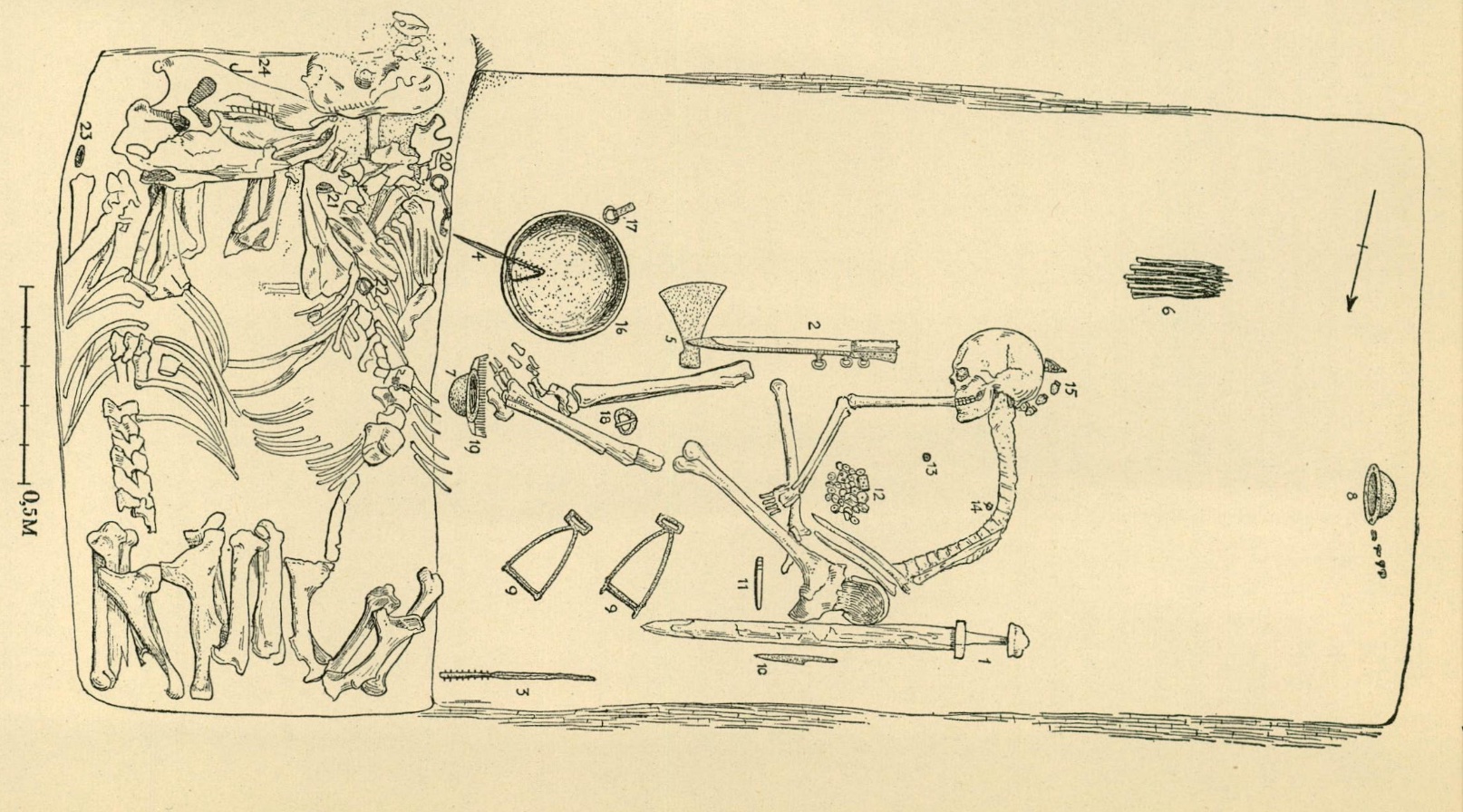One of the most overlooked, yet highly important aspects of Viking Age society is the vast range of female roles and societal stratification. An area of focus that I will be primarily discussing is the existence of militaristic female depictions, which divert largely from the modern pop culture understanding of Viking men being the only militaristic presence in Viking Age society.
Let us begin with Björkö grave Bj 581, located in Birka, Sweden. This grave, surveyed originally in 1878, contains several weapons as well as animal and human bones. While from the outside, the grave appeared largely flat, only denoted by a slight ground indentation, the internal structure of the grave is that of a chamber tomb. The pit in which the grave survived was 3.5 x 1.8 m, with a depth of 1.8 m.

Birka grave Bj. 581, Björkö, SE.
Excavation plan.
(source: Arbman 1943, fig. 143.)
Within the grave, a fascinating assemblage of 56 total items was found together. Beyond the material goods found in the grave, several different bones from both humans and horses accompanied the main skeletal remains. This grave was thought to be of a high-class individual, given the inclusion of a wide range of weapons and equestrian equipment in the burial. Price et al. (2019) highlight this uniqueness: “of the more than 1100 excavated burials on Birka, only 75 contain one or more offensive weapons. Bj. 581 is one of only two burials from the entire island with a full complement of weapons and has been grouped among the 20 richest graves on the site.” Some of the most prominent and unusual material artifacts from Bj. 581 are gaming pieces with a board, whose complete assemblage and placement in proximity to the skeletal remains of Bj. 581 are exceedingly rare. While the original survey of the grave presumed these remains belonged to a male warrior, more contemporary analysis has provided evidence contrary to this initial conclusion.
In a reappraisal of the grave, Hedenstierna-Jonson et al. (2017) conducted a genomic analysis of the skeleton found in the Bj. 581 grave. In doing so, the researchers provide us with a lens into the complexity of Viking society beyond the traditional notion of male warriors and archeological evidence for female depictions within Viking poetry, which will be explored later on in this guidebook. The researchers began by evaluating the osteology of the skeletal remains preserved from Bj. 581. After morphological analysis, the researchers believed the skeleton to be typical of a thirty-year or older female. To extend this analysis further, the researchers extracted DNA from all bone regions and subsequently performed sequencing analysis on the DNA fragments. Human reference genomes were compared to degradation patterns of the Bj. 581 skeletal DNA, followed by molecular sex assignment by sequence aligning to chromosomes X and Y. Additional analysis was performed by performing strontium isotope analyses on three molar teeth from the lower jaw of the Bj. 581 skeleton.
After performing both analyses, the Birka warrior sequenced genome coverage was statistically significant, providing definitive evidence for the Bj. 581 individual being buried as a female high-ranking warrior. While convincing, it is unclear how this female-sexed individual may have functioned in societal gender roles. Price et al. (2019) note: “she may have taken on a man’s social role while retaining a female identity.” Future work on Bj. 581 and other female-sexed Viking Age warriors must be able to account for this nuanced ambiguity, as well as maintain an analytical approach that is not influenced by our contemporary biases and understandings of gendered societal constructs.
« Previous | Home | Next »